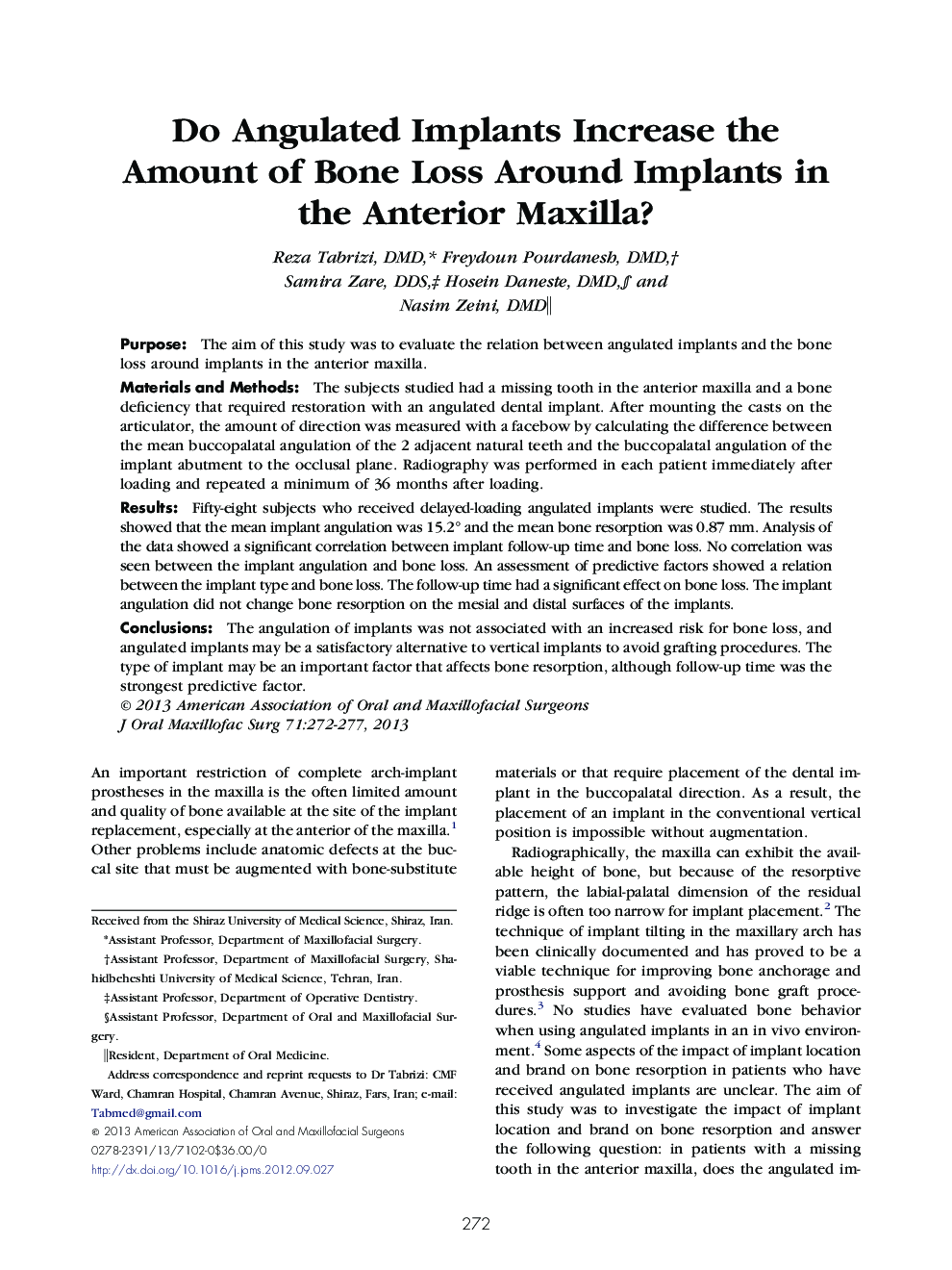| Article ID | Journal | Published Year | Pages | File Type |
|---|---|---|---|---|
| 3152735 | Journal of Oral and Maxillofacial Surgery | 2013 | 6 Pages |
PurposeThe aim of this study was to evaluate the relation between angulated implants and the bone loss around implants in the anterior maxilla.Materials and MethodsThe subjects studied had a missing tooth in the anterior maxilla and a bone deficiency that required restoration with an angulated dental implant. After mounting the casts on the articulator, the amount of direction was measured with a facebow by calculating the difference between the mean buccopalatal angulation of the 2 adjacent natural teeth and the buccopalatal angulation of the implant abutment to the occlusal plane. Radiography was performed in each patient immediately after loading and repeated a minimum of 36 months after loading.ResultsFifty-eight subjects who received delayed-loading angulated implants were studied. The results showed that the mean implant angulation was 15.2° and the mean bone resorption was 0.87 mm. Analysis of the data showed a significant correlation between implant follow-up time and bone loss. No correlation was seen between the implant angulation and bone loss. An assessment of predictive factors showed a relation between the implant type and bone loss. The follow-up time had a significant effect on bone loss. The implant angulation did not change bone resorption on the mesial and distal surfaces of the implants.ConclusionsThe angulation of implants was not associated with an increased risk for bone loss, and angulated implants may be a satisfactory alternative to vertical implants to avoid grafting procedures. The type of implant may be an important factor that affects bone resorption, although follow-up time was the strongest predictive factor.
